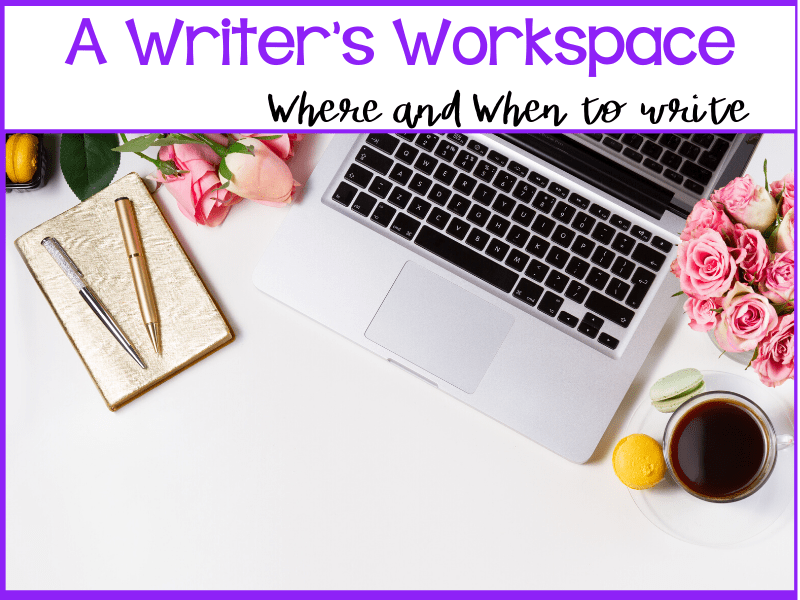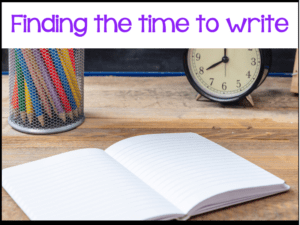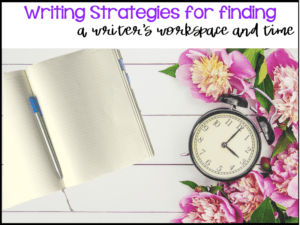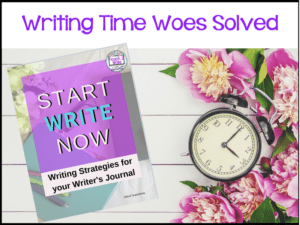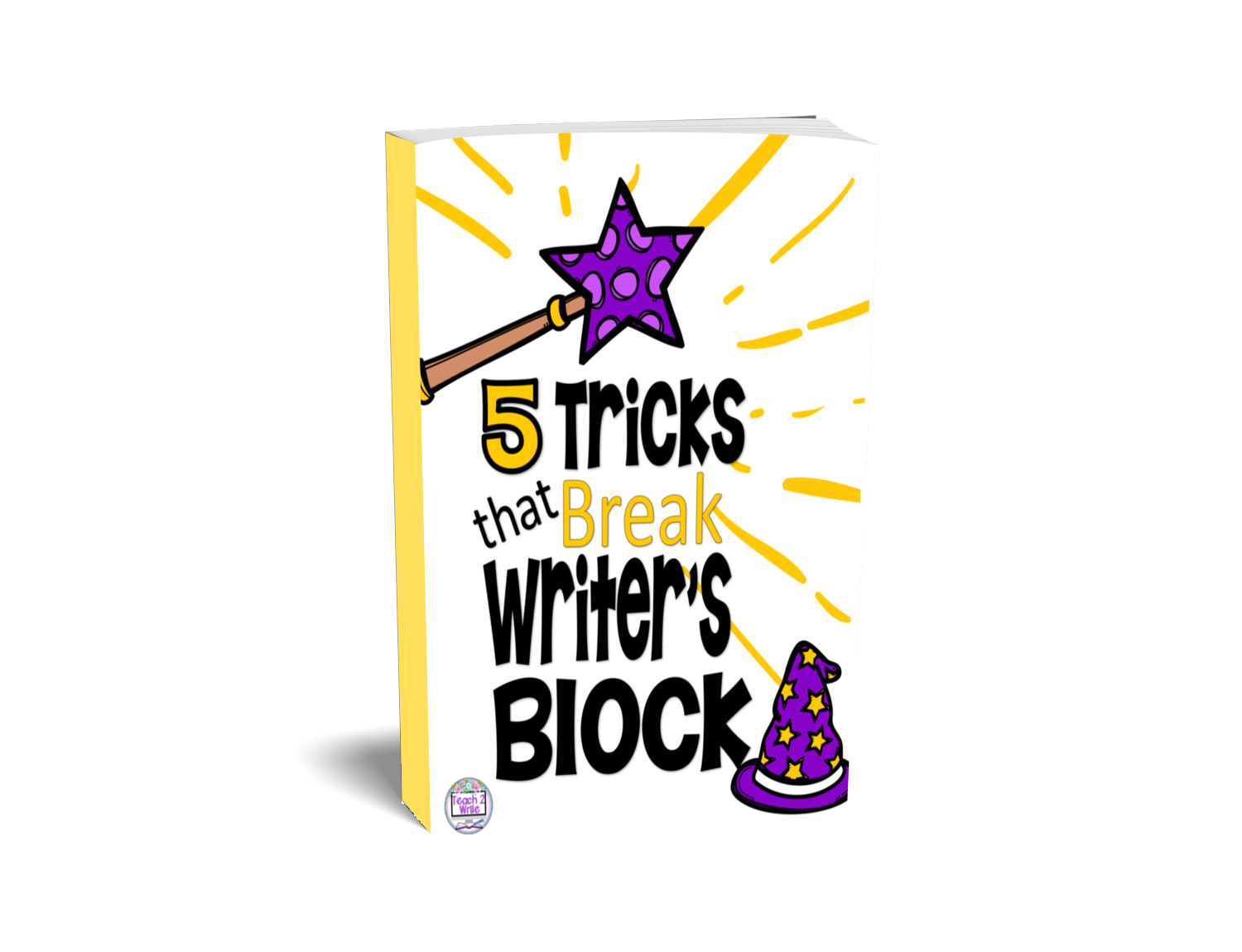A writer’s workspace is what I discuss in episode 4 of The Write Idea Podcast – I discuss finding the workspace and time to write. Do you long for a special place to write? How about a chunk of TIME to write? So many writers have these same problems, but TODAY…I have a few solutions for you!
Thank you so much for being here! I hope you find this episode helpful.
Finding the workspace to write:
Some of my favorite authors have these elaborate places to write – offices within their homes with vast private libraries behind them. Stephen King, Anne Rice, Ernest Hemingway and a bunch of others. Yet, until last year, I never had my own writer’s workspace.
I remember once dreaming of going to a writing retreat, but it was too expensive. At that time, I couldn’t leave my two babies for a whole week during the summer. I would NOT have written ANYTHING because I would’ve felt guilty and anxious about leaving them.
Does an author need a writer’s workspace, a separate office, to create?
I spent years thinking I had to have a specific space to write. An office, a room of my own, free of distractions, etc. For years I made excuses about not being able to write because I didn’t have a “where” to do it.
You know what I found out? Quiet writing spaces are a myth.
I finally started writing a romance novel after 15 years of research and false starts. 15 years! I have notebooks full of obscure information about the Carolingian era and the Vikings. Little did I know the market was not only oversaturated, it was passé.
Even with my own twist, focusing on France, instead of England, didn’t get me an agent or an editor interested in my 80,000 word romance novel. I still love that plot. I love the characters, and maybe ONE day I will try to rework and revise Gisela’s Ring. In another podcast episode, I can talk more about why I shifted away from this first novel.
I wrote that whole novel without a traditional writer’s workspace.
About a year after I finished writing that book, two things happened:
- First, my husband told me to write something like Stephenie Meyer’s Twilight series – basically to write for the age group that I teach.
- Then, I had a dream which became the genesis of my Children of the Psi book series.

Getting Creative with your writer’s workspace:
My biggest obstacles to writing – I had two small children and a full time job as an English teacher.
I’d read how Stephanie Meyer wrote her books with a baby sitting on her lap. I thought, if she can do it, so can I. I sat on the floor of my children’s bedroom, watching them play while I wrote. At that time, Erin was about 3 1/2 and Danny was about 6 months old.
I wrote and wrote and wrote, sharing parts of my story with various students who wanted to read it. They gave me feedback and I went back and revised and clarified. I joined a writer’s group and met weekly with those ladies until I got the beginnings of my book written in a way that caught a reader’s attention.
I still go to coffee shops or Panera’s every now and again. Sometimes, I write at the park. Other times I write in a parking lot that overlooks a beautiful view. For years, I made excuses about not being able to write because I didn’t have a “where” to do it. Not anymore.
Writing teachers – I tell my students that writing time is sacred. I give students brainstorming time during mini lessons with a short collaborative peer discussion, but then I send my students off to write or read, depending on what our focus standard is for the week.
Other than conferring with them once a week or so, I let them just write (or read).
For writers – this advice is for you – butt in chair writing – needs to be your mantra.
Butt in chair writing – it’s a thing. That is your writer’s workspace. It’s not always easy. Just remember, you have so many tools you can use at your fingertips (or thumbs if you’re using your smartphone).
Finding the TIME to write:
When I tell people that I’ve published some books, I often hear back from colleagues and friends, “I want to write a book someday too.” Yet, I think only one or two of them actually did.
My colleagues are part of the 80% of Americans who would like to write a book someday, according to a whole ton of articles that I just Googled. Less than 1% actually pursue that goal, and the biggest reason people give for not writing a book is – time.
Writing does take time. It’s butt in chair, eyes on the keyboard or your screen, and allowing your thoughts to go through your mind and out through your fingers. Sometimes the words just don’t come to you. Which is why, by the way, I use a writing journal. I can usually brainstorm my way through that writer’s block.
I’ve also heard from many teachers and students that they don’t get enough time to write what they really want to write in school.
Before common core came along, my students used to write every day, as soon as they came into my classroom, in my ELA classes. However, when I switched schools, there was so much demand to “teach to the textbook.” I often didn’t allow enough time for writing, especially writing my students most enjoyed.
A horrible trend for student writers:
A horrible trend started – kids hate to write. The only reason they are given to write is to talk about another author’s text. They really don’t get the chance to write about their own thoughts, their own beliefs, their own ideas. This has become a nation-wide phenomena. I have discussed this with hundreds of students over the last five years.
However, in the last year or so, I’ve seen a shift away from doing strictly evidence-based writing with more and more teachers embracing creative writing again in their ELA classrooms.
When I saw myself going down that rabbit hole, I course corrected and started having students write what they love on Fridays. Then, I let them share. Not only did they sharpen their writing skills, students also practiced listening and speaking skills, and sharing also built class rapport.
After I switched to 8th grade, I needed to do even more academic writing. So, I decided that I would give students 5 to 10 minutes, sometimes a little bit longer, at the beginning of the period to write about any topic and any genre. After one or two students shared, I tied this in with what I taught for my mini-lesson. During the rest of the 50 minute class period, students either read or wrote about the required texts.
Students should write and read multiple genres throughout the school year. Teaching students how to write a fictional story (not just personal narrative) for more than a couple of weeks can pay off in higher reading scores with fictional passages. They understand the decisions authors make, which is often included in the analytical questions from textbooks and local and state reading assessments. Jen Jones, the well-known literacy specialist behind Hello Literacy!, and I discussed this at length in Austin this summer at the Teacherspayteachers annual conference.
Writing strategies for finding a writer’s workspace and writing time:
So here are writing strategies for finding where and when you can write:
- Pull out your cell phone, go to the notes section, press on the microphone on the bottom right part of your phone, speak into your phone. The words will appear on your screen.
- Or open your Google Drive app, open your Docs app and press the microphone and talk into your phone. (That way you don’t have to copy and paste to a google doc.)
- You can go to a library or a coffee shop or the park and give yourself an hour of writing time and a walk through the park gives you some exercise, too! Bonus!
- If you can’t give yourself an hour, but you need a new location, put on some headphones get into a comfy chair with your laptop, set a timer for five to ten minutes and type as fast as you can for those minutes. These are called writing sprints.
(This is a trick that I learned from NaNoWriMo which stands for National Novel Writing Month, which is held every November. If you need a challenge or if you need some extra motivation, sign up for the NaNoWriMo writing sprints challenge on Twitter. When the sprint is done everyone says how many words they wrote it keeps you somewhat accountable.)
On the idea of keeping yourself accountable to writing time, you can also tell your friends, “Hey, I’ve been working on this piece of writing, and I just went for 30 minutes and wrote so a thousand words,” or however many words you wrote and you’ll get compliments and hearts or thumbs up. Just enough of a dopamine hit that can keep you motivated to do it again and again.
Your writer’s workspace and time woes solved:
But there are two pieces of advice I want to give you.
One is from Nike – JUST DO IT!
The second piece of advice is “Butt in Chair Writing.”
I didn’t come up with either one of those sayings, but they are so true. The only way that you’re going to write a book or compose a poem or finish a short story is if you’re actually writing it.
The Start Write Now Guide gives you strategies and tips and tricks for breaking through writer’s block. Click on this link to sign up for a free copy of it: Start Write Now Guide.
Thank you so very much for listening. I really do appreciate your time, especially for someone who is just starting out with this podcasting gig. It really means a lot to me. If you want to be a guest on this podcast or have some suggestions, please reach out to me on Instagram @teach2write.
Hey Writing Teachers! This is for You!
Transform your Writers!
5 Tricks that Break Writer’s Block Resources
Teaching writing doesn’t have to be complicated or take hours of grading. In fact, teaching students these 5 writing tricks, helps cut wasted time from late work, revision and grading!
These resources are my TOP FIVE writing strategies that I use with my students nearly every day throughout the school year. These strategies give my students and I the proven results of higher quality writing, less late work and less revision.

